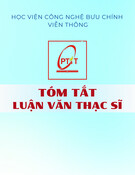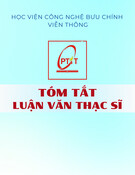
Annals of Mathematics
On the holomorphicity of
genus two Lefschetz
fibrations
By Bernd Siebert and Gang Tian

Annals of Mathematics,161 (2005), 959–1020
On the holomorphicity of genus two
Lefschetz fibrations
By Bernd Siebert∗and Gang Tian∗*
Abstract
We prove that any genus-2 Lefschetz fibration without reducible fibers and
with “transitive monodromy” is holomorphic. The latter condition comprises
all cases where the number of singular fibers µ∈10Nis not congruent to 0
modulo 40. This proves a conjecture of the authors in [SiTi1]. An auxiliary
statement of independent interest is the holomorphicity of symplectic surfaces
in S2-bundles over S2, of relative degree ≤7 over the base, and of symplectic
surfaces in CP2of degree ≤17.
Contents
Introduction
1. Pseudo-holomorphic S2-bundles
2. Pseudo-holomorphic cycles on pseudo-holomorphic S2-bundles
3. The C0-topology on the space of pseudo-holomorphic cycles
4. Unobstructed deformations of pseudo-holomorphic cycle
5. Good almost complex structures
6. Generic paths and smoothings
7. Pseudo-holomorphic spheres with prescribed singularities
8. An isotopy lemma
9. Proofs of Theorems A, B and C
References
Introduction
A differentiable Lefschetz fibration of a closed oriented four-manifold M
is a differentiable surjection p:M→S2with only finitely many critical points
of the form t◦p(z, w)=zw. Here z,w and tare complex coordinates on M
and S2respectively that are compatible with the orientations. This general-
ization of classical Lefschetz fibrations in Algebraic Geometry was introduced
* Supported by the Heisenberg program of the DFG.
∗∗Supported by NSF grants and a J. Simons fund.

960 BERND SIEBERT AND GANG TIAN
by Moishezon in the late seventies for the study of complex surfaces from the
differentiable viewpoint [Mo1]. It is then natural to ask how far differentiable
Lefschetz fibrations are from holomorphic ones. This question becomes even
more interesting in view of Donaldson’s result on the existence of symplectic
Lefschetz pencils on arbitrary symplectic manifolds [Do]. Conversely, by an
observation of Gompf total spaces of differentiable Lefschetz fibrations have
a symplectic structure that is unique up to isotopy. The study of differen-
tiable Lefschetz fibrations is therefore essentially equivalent to the study of
symplectic manifolds.
In dimension 4 apparent invariants of a Lefschetz fibration are the genus
of the nonsingular fibers and the number and types of irreducible fibers. By
the work of Gromov and McDuff [MD] any genus-0 Lefschetz fibration is in
fact holomorphic. Likewise, for genus 1 the topological classification of elliptic
fibrations by Moishezon and Livn´e [Mo1] implies holomorphicity in all cases.
We conjectured in [SiTi1] that all hyperelliptic Lefschetz fibrations without
reducible fibers are holomorphic. Our main theorem proves this conjecture in
genus 2. This conjecture is equivalent to a statement for braid factorizations
that we recall below for genus 2 (Corollary 0.2).
Note that for genus larger than 1 the mapping class group becomes reason-
ably general and group-theoretic arguments as in the treatment of the elliptic
case by Moishezon and Livn´e seem hopeless. On the other hand, our methods
also give the first geometric proof for the classification in genus 1.
We say that a Lefschetz fibration has transitive monodromy if its mon-
odromy generates the mapping class group of a general fiber.
Theorem A.Let p:M→S2be a genus-2 differentiable Lefschetz fibra-
tion with transitive monodromy. If all singular fibers are irreducible then pis
isomorphic to a holomorphic Lefschetz fibration.
Note that the conclusion of the theorem becomes false if we allow reducible
fibers; see e.g. [OzSt]. The authors expect that a genus-2 Lefschetz fibration
with µsingular fibers, tof which are reducible, is holomorphic if t≤c·µfor
some universal constant c. This problem should also be solvable by the method
presented in this paper. One consequence would be that any genus-2 Lefschetz
fibration should become holomorphic after fiber sum with sufficiently many
copies of the rational genus-2 Lefschetz fibration with 20 irreducible singular
fibers. Based on the main result of this paper, this latter statement has been
proved recently by Auroux using braid-theoretic techniques [Au].
In [SiTi1] we showed that a genus-2 Lefschetz fibration without reducible
fibers is a two-fold branched cover of an S2-bundle over S2. The branch locus
is a symplectic surface of degree 6 over the base, and it is connected if and
only if the Lefschetz fibration has transitive monodromy. The main theorem

LEFSCHETZ FIBRATIONS 961
therefore follows essentially from the next isotopy result for symplectic surfaces
in rational ruled symplectic 4-manifolds.
Theorem B.Let p:M→S2be an S2-bundle and Σ⊂Ma con-
nected surface symplectic with respect to a symplectic form that is isotopic to a
K¨ahler form. If deg(p|σ)≤7then Σis symplectically isotopic to a holomorphic
curve in M,for some choice of complex structure on M.
Remark 0.1. By Gromov-Witten theory there exist surfaces H, F ⊂M,
homologous to a section with self-intersection 0 or 1 and a fiber, respectively,
with Σ ·H≥0, Σ ·F≥0. It follows that c1(M)·Σ>0 unless Σ is homologous
to a negative section. In the latter case Proposition 1.7 produces an isotopy
to a section with negative self-intersection number. The result follows then
by the classification of S2-bundles with section. We may therefore add the
positivity assumption c1(M)·Σ>0 to the hypothesis of the theorem. The
complex structure on Mmay then be taken to be generic, thus leading to CP2
or the first Hirzebruch surface F1=P(O
CP
1⊕O
CP
1(1)).
For the following algebraic reformulation of Theorem A recall that Hurwitz
equivalence on words with letters in a group Gis the equivalence relation
generated by
g1...g
igi+1 ...g
k∼g1...[gigi+1g−1
i]gi...g
k.
The bracket is to be evaluated in Gand takes up the ith position. Hurwitz
equivalence in braid groups is useful for the study of algebraic curves in rational
surfaces. This point of view dates back to Chisini in the 1930’s [Ch]. It has
been extensively used and popularized in work of Moishezon and Teicher [Mo2],
[MoTe]. In this language Theorem A says the following.
Corollary 0.2. Let x1,...,x
d−1be standard generators for the braid
group B(S2,d)of S2on d≤7strands. Assume that g1g2...g
kis a word in pos-
itive half-twists gi∈B(S2,d)with (a) igi=1or (b) igi=(x1x2...x
d−1)d.
Then k≡0mod2(d−1) and g1g2...g
kis Hurwitz equivalent to
(a) (x1x2...x
d−1xd−1...x
2x1)k
2d−2
(b) (x1x2...x
d−1xd−1...x
2x1)k
2d−2−d(d−1)(x1x2...x
d−1)d.
Proof. The given word is the braid monodromy of a symplectic surface Σ
in (a) CP1×CP1or (b) F1respectively [SiTi1]. The number kis the cardinality
of the set S⊂CP1of critical values of the projection Σ →CP1. By the theorem
we may assume Σ to be algebraic. A straightfoward explicit computation gives
the claimed form of the monodromy for some distinguished choice of generators
of the fundamental group of CP1\S. The change of generators leads to Hurwitz
equivalence between the respective monodromy words.

962 BERND SIEBERT AND GANG TIAN
In the disconnected case there are exactly two components and one of
them is a section with negative, even self-intersection number. Such curves are
nongeneric from a pseudo-holomorphic point of view and seem difficult to deal
with analytically. One possibility may be to employ braid-theoretic arguments
to reduce to the connected case. We hope to treat this case in a future paper.
A similar result holds for surfaces of low degree in CP2.
Theorem C.Any symplectic surface in CP2of degree d≤17 is symplec-
tically isotopic to an algebraic curve.
For d=1,2 this theorem is due to Gromov [Gv], for d= 3 to Sikorav [Sk]
and for d≤6 to Shevchishin [Sh]. Note that for other symplectic 4-manifolds
homologous symplectic submanifolds need not be isotopic. The hyperelliptic
branch loci of the examples in [OzSt] provide an infinite series inside a blown-up
S2-bundle over S2. Furthermore a quite general construction for homologous,
nonisotopic tori in nonrational 4-manifolds has been given by Fintushel and
Stern [FiSt].
Together with the classification of symplectic structures on S2-bundles
over S2by McDuff, Lalonde, A. K. Liu and T. J. Li (see [LaMD] and references
therein) our results imply a stronger classification of symplectic submanifolds
up to Hamiltonian symplectomorphism. Here we wish to add only the simple
observation that a symplectic isotopy of symplectic submanifolds comes from
a family of Hamiltonian symplectomorphisms.
Proposition 0.3. Let (M,ω)be a symplectic 4-manifold and assume that
Σt⊂M,t∈[0,1] is a family of symplectic submanifolds. Then there exists a
family Ψtof Hamiltonian symplectomorphisms of Mwith Ψ0=idand Σt=
Ψt(Σ0)for every t.
Proof.AtaP∈Σt0choose complex Darboux coordinates z=x+iy,
w=u+iv with w= 0 describing Σt0. In particular, ω=dx∧dy +du∧dv.For
tclose to t0let ft,gtbe the functions describing Σtas graph w=ft(z)+igt(z).
Define
Ht=−(∂tgt)·(u−ft)+(∂tft)·(v−gt).
Then for every fixed t
dHt=−(u−ft)∂t(dgt)+(v−gt)∂t(df t)−(∂tgt)du +(∂tft)dv.
Thus along Σt
dHt=−(∂tgt)du +(∂tft)dv =ω¬(∂tft)∂u+(∂tgt)∂v.
The Hamiltonian vector field belonging to Htthus induces the given deforma-
tion of Σt.


























